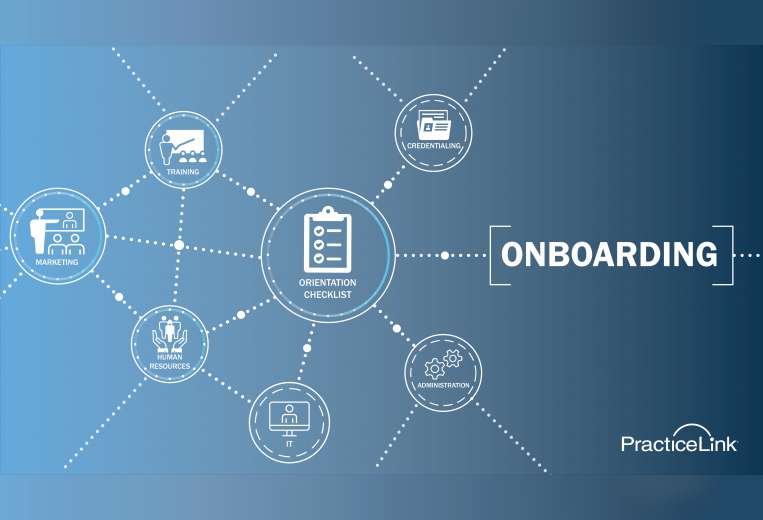Creating a smooth transition through onboarding
 Posted by Megan Trippi
Posted by Megan Trippi

For a hire to become successful and feel a part of your organization, you need to get them acquainted with the community, staff and practice. You should also cover credentialing, human resources orientation, IT assessment and marketing integration.
COVID-19 has made some in-person interactions and onboarding difficult. If there are forms and paperwork the physician needs to complete, making them available digitally will allow the hire to take their time and thoroughly review materials. This creates an easier way to familiarize them with the onboarding process and complete it without risking exposure.
To create a smooth transition, you will want to have an orientation checklist - like this one from business management consultant Karen Zupko. This might include credentialing, administrative tasks, human resources, IT, training and marketing.
Credentialing
You’ll want to guide your hire through the licensing and credentialing processes. This will require their proper medical degrees and completion of residency, along with meeting the current guidelines for being licensed in the state where they plan to practice and passing an exam.
Administration
Determine the materials and equipment the hire will need. You will also want to conduct tours and visits, work the physician into the practice schedule, discuss compensation, review policies and help your hire become acquainted with the community and the various resources available to them.
HR and IT
Your hire will need to know human resources policies, benefits and other information pertaining to the organization and their specific facility. They will also need to be set up and made familiar with email, voicemail and any scheduling programs or other programs such as security and software.
Training
The physician will have had medical training from school, residency and possibly fellowship, but they will need to be trained on all aspects of your health care system, operations and also how care is provided at your organization.
Marketing
How you introduce or promote your new hire can vary based on what they want or with what your organization feels comfortable. Marketing can include formal announcements, business cards, video introductions on social media, photos on your website, an open house and other ways to share the news with the public.
Assign a project manager and roles with members of staff to ensure they know the part they play in guiding new hires, keep the process on a timeline and hold one another accountable. The project manager can work as a liaison for the new hire to communicate the needs of each department to the employee and vice versa.
Providing a physician mentor to work with the newly hired provider will also help them better assimilate to the new environment and practice. That mentor will also get a feel for how the physician is adjusting to their new position. Another way to measure the onboarding process is to conduct surveys and see what is going well and where you can improve.
The onboarding process can take 90 to 180 days, so putting time and effort into onboarding will help decrease turnover and improve retention of your hires.
When you have systems and procedures in place that work well, you can more easily train and transition new hires, maintaining smooth onboarding for their first months of practice, continuing throughout their career. Clear onboarding and training strategies, a positive environment with extensive resources and detailed goals will keep and sustain a steady flow of quality physicians.

